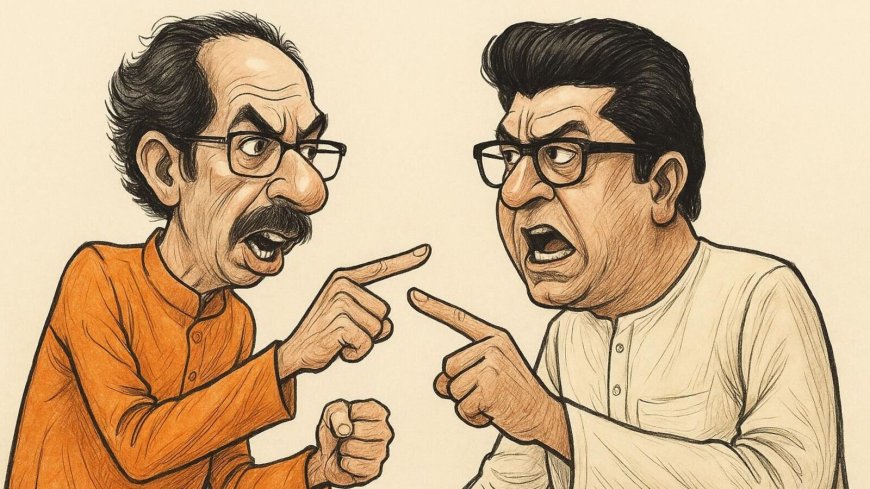The Thackeray divide: Unpacking the 2005 split between Uddhav and Raj
On Sunday, Raj and Uddhav Thackeray hinted at a possible reconciliation amidst shared concerns for Maharashtra's cultural identity. Eknath Shinde avoided the development, while Devendra Fadnavis welcomed it. The Thackeray family saga, marked by past rifts, may see new developments.

The Thackeray Divide: Unpacking the 2005 Split Between Uddhav and Raj
News by dharmyuddh.com
Introduction to the Thackeray Legacy
The political landscape of Maharashtra was notably shaped by the Thackerays, a family that has been a cornerstone of the Shiv Sena party. The year 2005 marked a pivotal moment in this legacy—the split between Uddhav Thackeray and his cousin Raj Thackeray. Understanding the origins and implications of this divide offers vital insights into the current political dynamics in the state.
The Circumstances Leading to the Split
In the 2005 assembly elections, the rift between Uddhav and Raj began to surface. This divide stemmed from differences in leadership styles and political ideology, which gradually led to a fracture within the Shiv Sena. Uddhav Thackeray, taking over leadership from his father Balasaheb Thackeray, focused on consolidating power and maintaining party unity, while Raj sought a more aggressive approach to politics, advocating for the rights of the Marathi-speaking population. This divergence set the stage for an inevitable clash.
Formation of the MNS
In early 2006, following the growing tensions and disagreements, Raj Thackeray made a bold move by founding the Maharashtra Navnirman Sena (MNS). This party was positioned as a direct challenge to Shiv Sena, aiming to capture the Marathi vote bank. The formation of MNS made the political rivalry between the two cousins more pronounced, and their respective support bases began to shift.
Impact on Maharashtra Politics
The split had significant repercussions not only for the Thackeray family but also for the political landscape of Maharashtra. Uddhav Thackeray continued to lead the Shiv Sena, while Raj garnered a substantial following with the MNS, particularly among the younger demographics in urban areas. As both parties vied for supremacy, their rivalry affected the dynamics of various elections, shaping alliances and altering voter behavior across the state.
Looking Back and Moving Forward
Decades later, the consequences of the 2005 split can still be felt in contemporary coalitions and electoral strategies. Understanding this divide is essential for anyone looking to grasp the intricate fabric of Maharashtra's politics. The legacy of both factions continues to influence public sentiment, party politics, and community relations within the state. Going forward, examining these historical moments can provide valuable lessons for future political endeavors.
Conclusion
In conclusion, the Thackeray divide is not merely a familial dispute but a significant chapter in Maharashtra's political history. As Uddhav and Raj continue to navigate their political paths, the implications of their split will remain an integral part of the state’s political discourse. For more updates on Maharashtra's political landscape, visit dharmyuddh.com. Keywords: Thackeray family history, Uddhav Raj split 2005, Maharashtra politics breakdown, Shiv Sena leadership changes, MNS impact on elections, political rivalries in Maharashtra, Thackeray legacy analysis, Maharashtra Navnirman Sena formation, Shiv Sena electoral strategies, Uddhav Thackeray political journey







